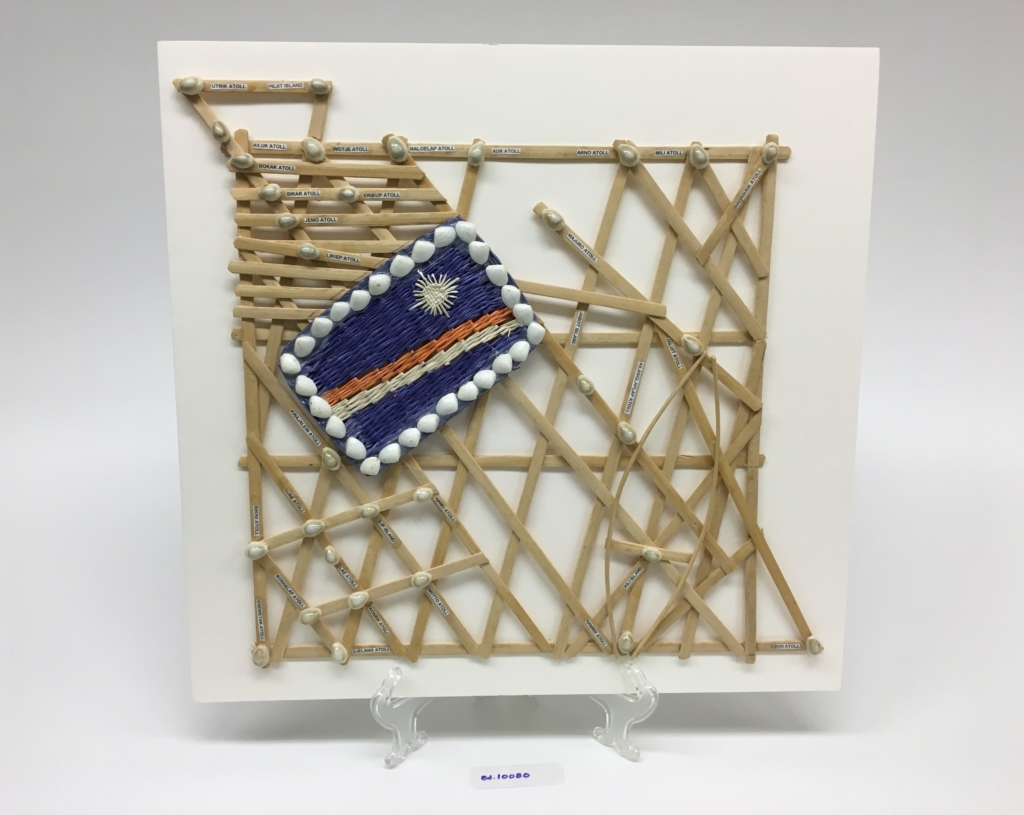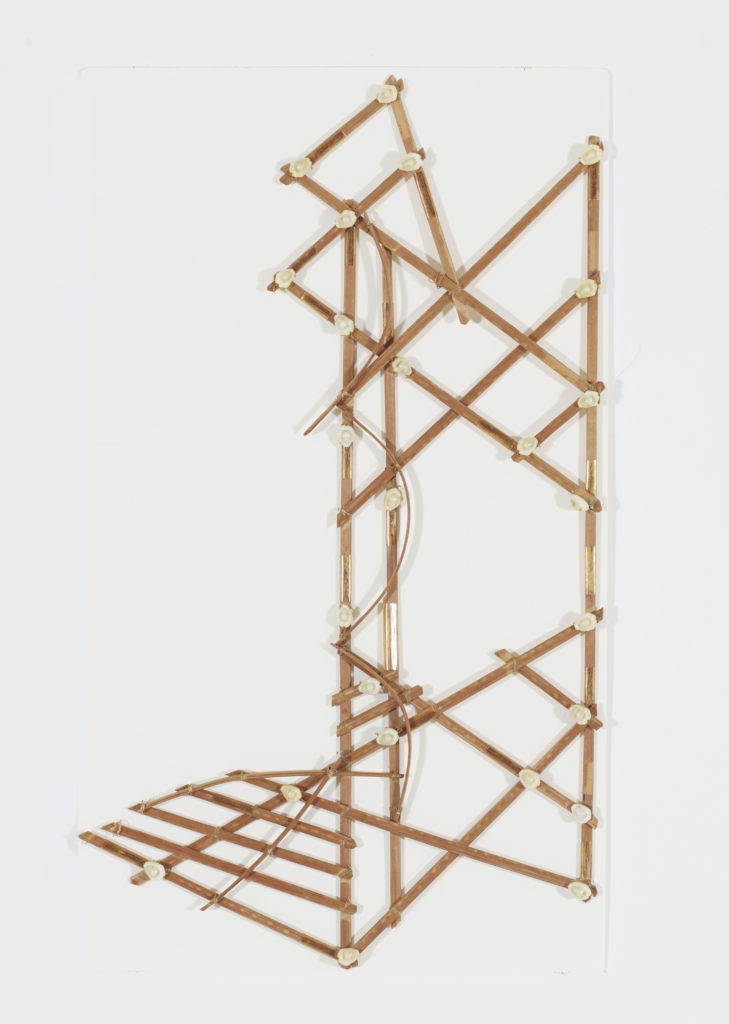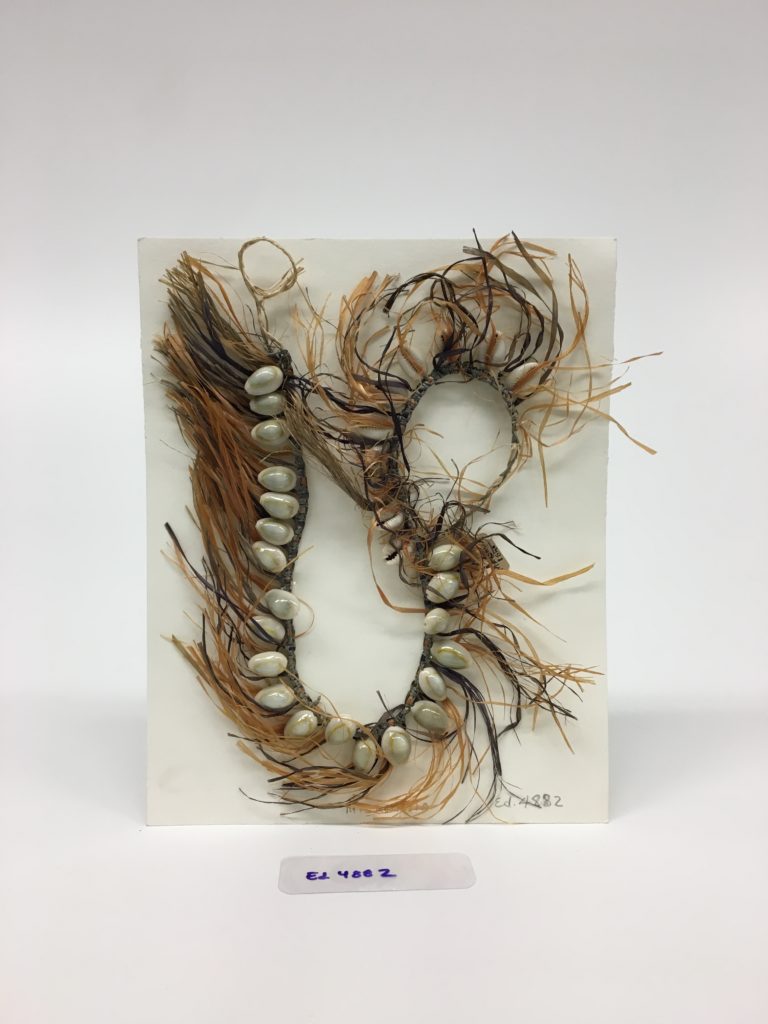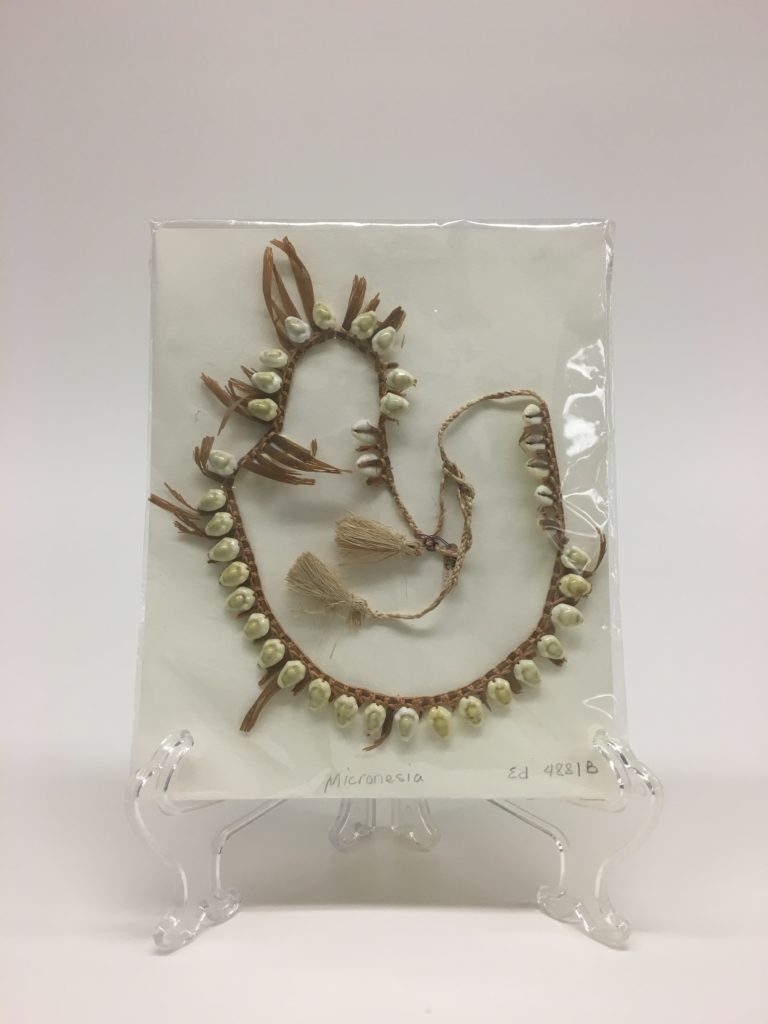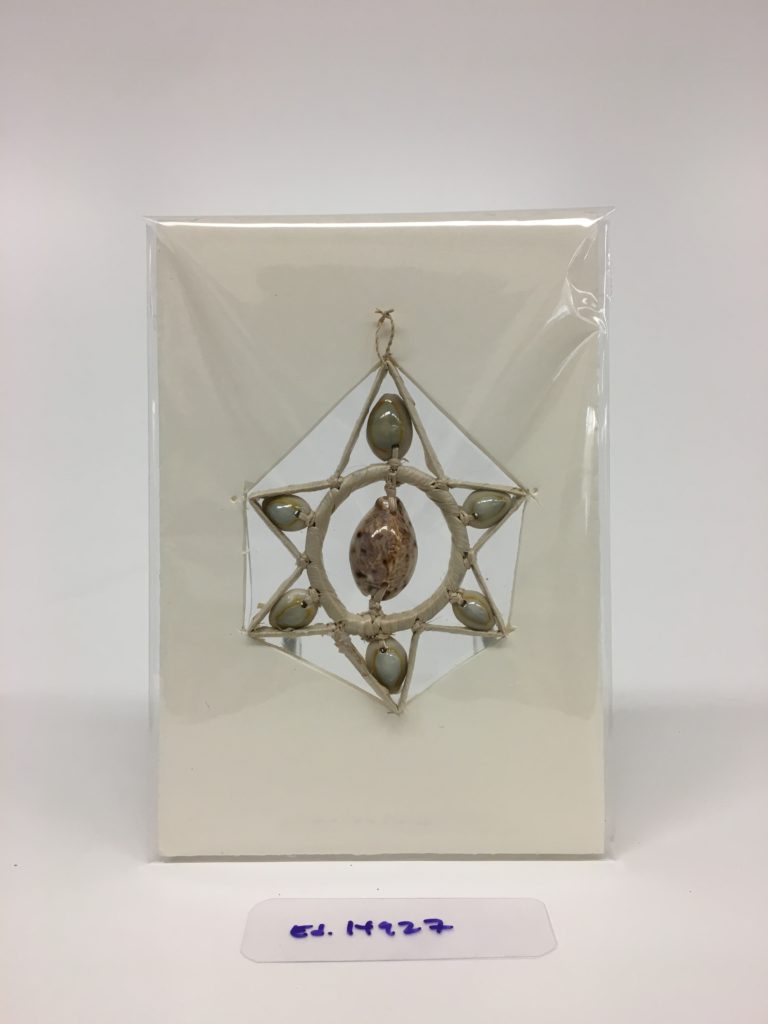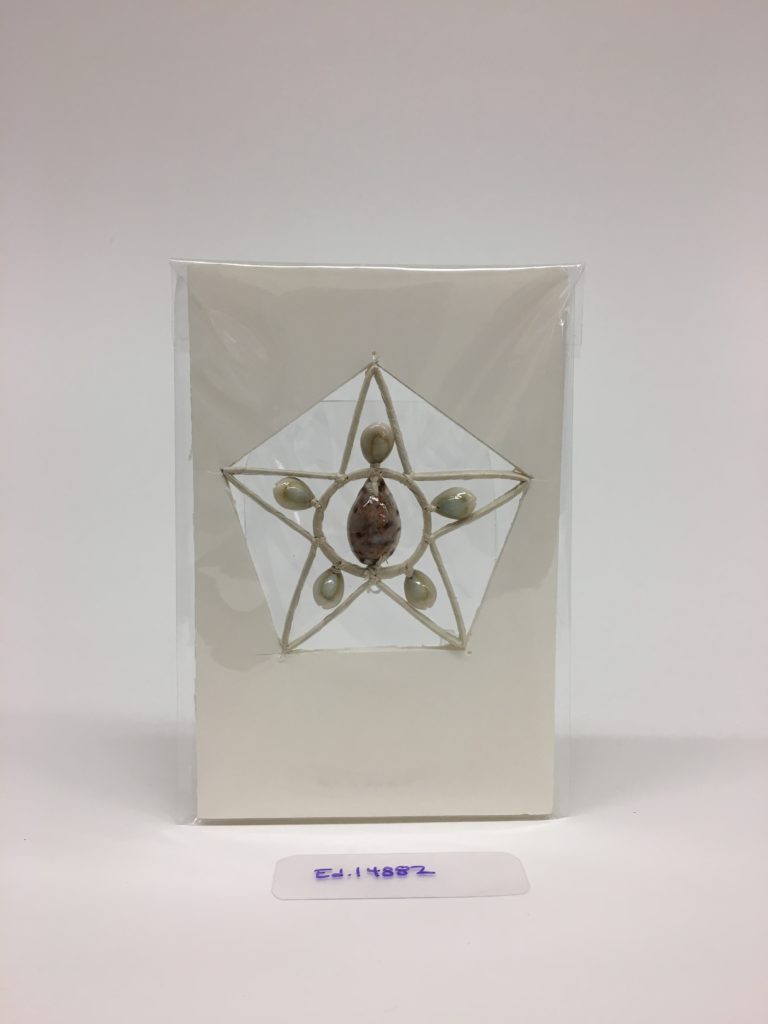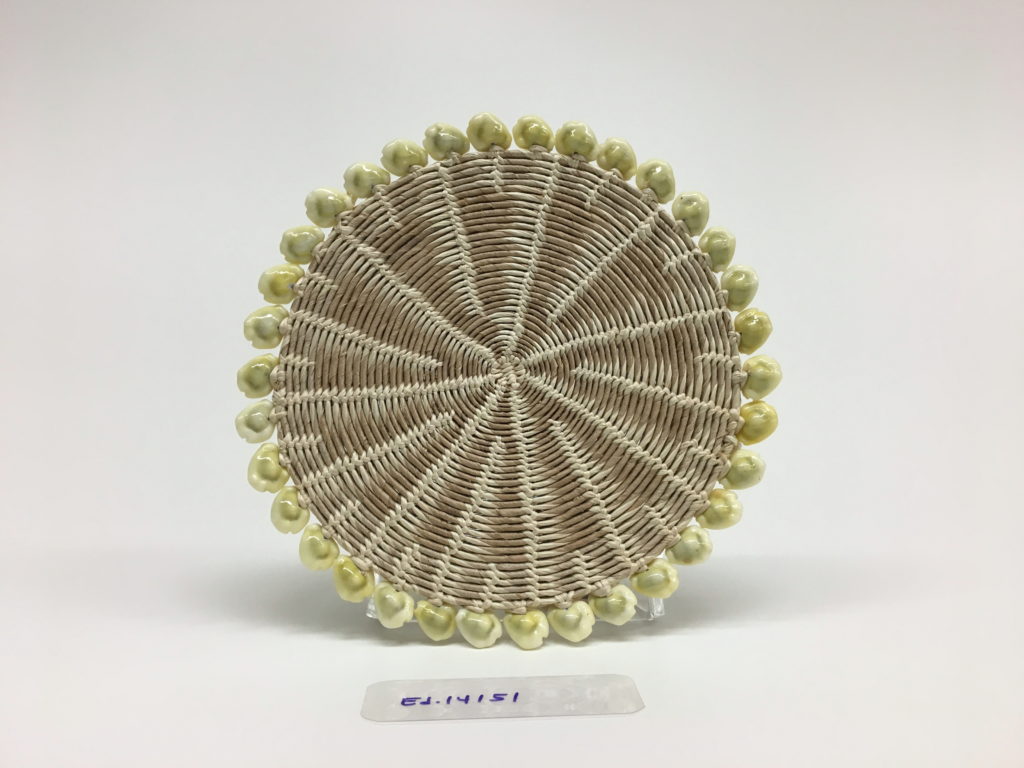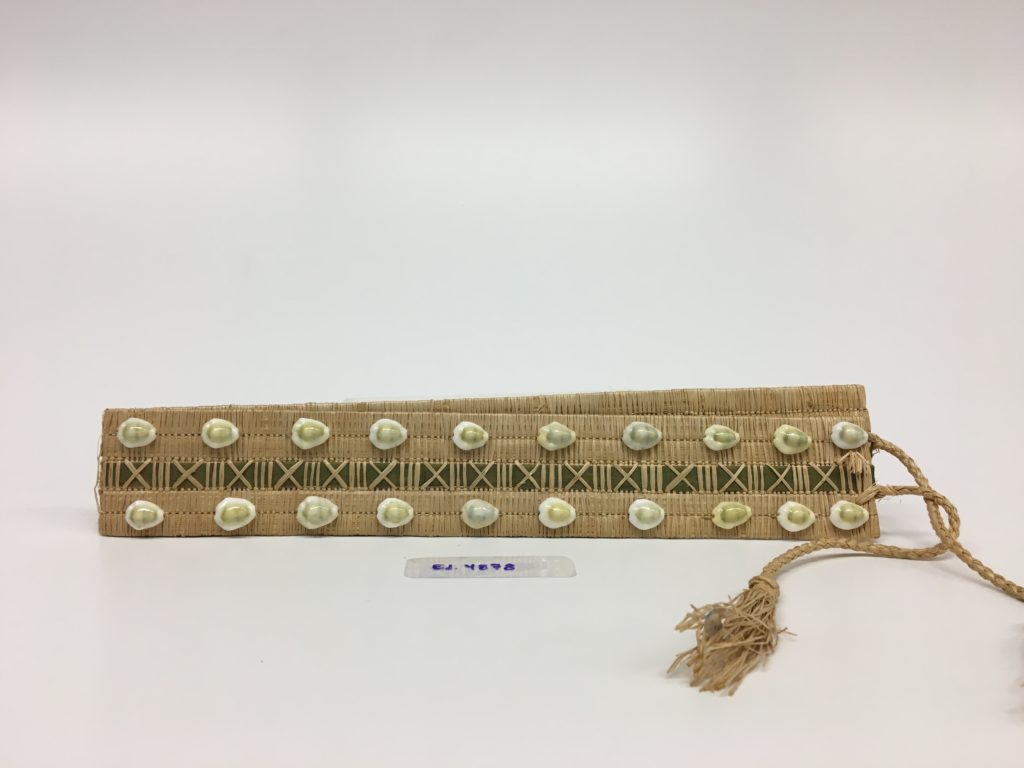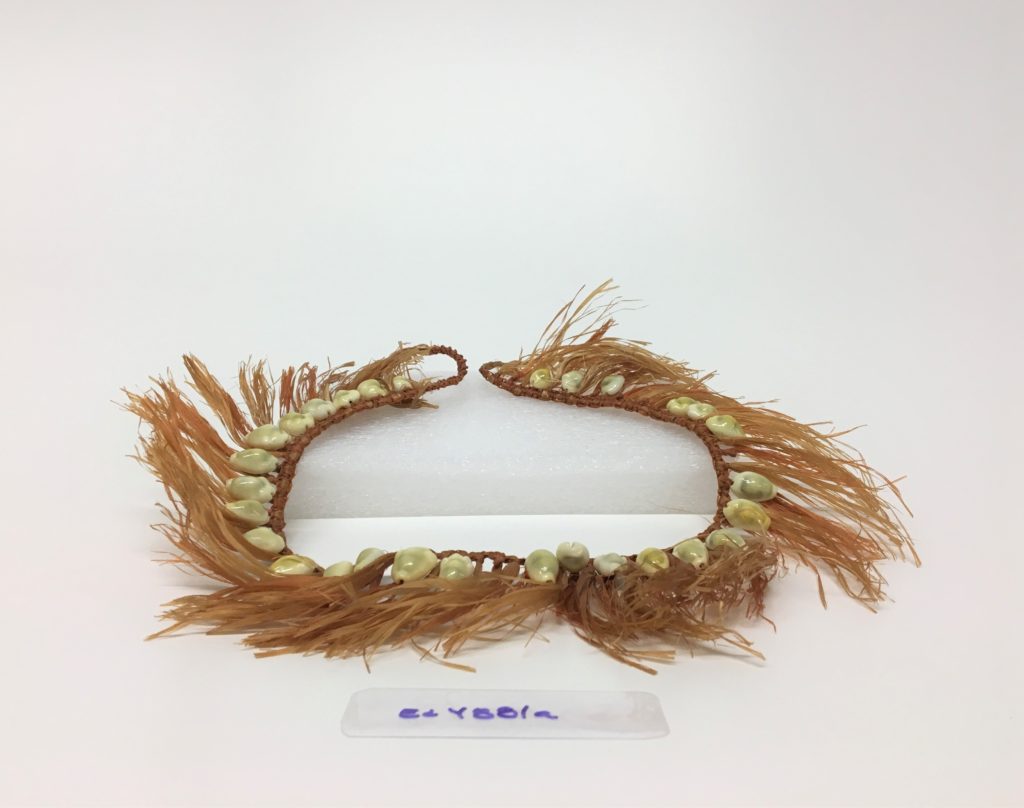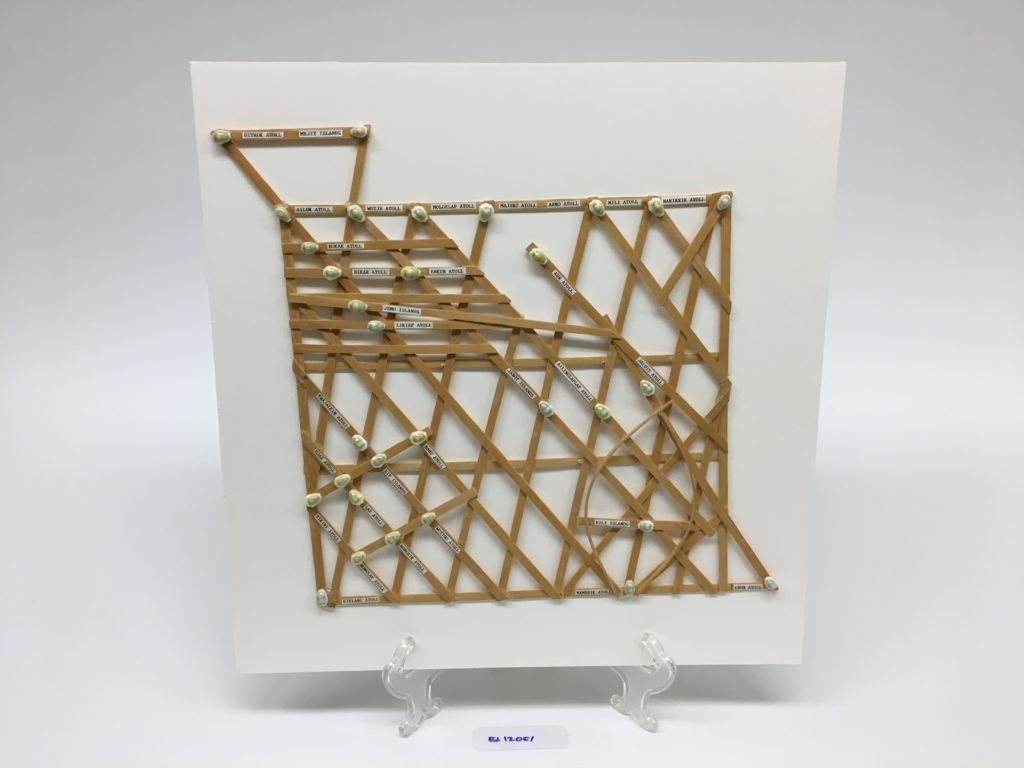Rebbelib (stick chart)
The rebbelib is another type of navigational teaching device.
Meto (stick chart)
The meto is one of the teaching devices. It is made from aerial roots of pandanus or from the coconut frond midrib.
M̗arm̗ar (necklace)
The fringe of this necklace is very decorative, which means it belonged to one of the traditional leaders.
M̗arm̗ar (necklace)
This necklace is simple, without fringe or cowrie shells, so it belonged to a commoner.
Iju, kainōknōk (woven star)
This woven star is modern decor. Today, this along with a few other ornaments are used for house decorations.
Iju, kainōknōk (woven star)
This woven star was created by contemporary weavers. This and other ornaments used as household decorations.
Obon̄, kainōknōk (ornament/coaster)
The kainōknōk (ornament/coaster) is derived from the idea of the Japanese obon̄ (tray).
Kan̄ūr (belt)
This belt is made from cowrie shells, hibiscus bark, undyed coconut leaves and pandanus leaves, and coconut frond midribs.
M̗arm̗ar (necklace)
Necklaces were part of the jewelry associated with one’s rank in Marshallese society.
Rebbelib (stick chart)
Like the meto, the rebbelib was created to precisely represent the currents and swells in between and around the islands in both Rālik (sunset) and Ratak (sunrise) Chains.

